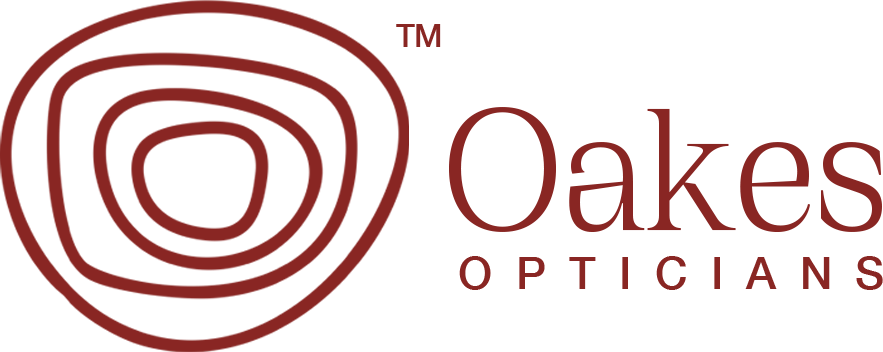As we age, so do our eyes. Growing older, you start to notice your body strength reduces. Well, the same happens to our eyes.
Why is that?
Some changes are driven by heredity, while some are created by unhealthy lifestyles, smoking, unhealthy diets, and destructive behaviours that put our eyes at risk.
Growing older leads to conditions that need to be monitored regularly, and this is where you need to decide that an optician becomes your friend and regular eye examinations become your hobby.
Here are some eye conditions you need to be aware of:
Presbyopia
Have you ever read a book at arm’s length or squint your eyes while watching a digital screen? That is presbyopia. This condition affects the flexibility of the eye’s lens. This natural stiffening makes focusing on near objects increasingly complex, typically starting around age 40.
To manage Presybyopia, you should get a pair of reading glasses, especially for close-up tasks like reading, sewing or crafting. Bifocal or progressive lenses can offer seamless vision transitions between near and far distances.
More light helps your ageing eyes focus, so you should invest in good reading lamps and consider overhead lighting adjustments.in addition, increase font sizes on your devices and consider apps or settings that enhance screen contrast. We don’t want to stress those eyes much.
Glaucoma
People over the age of 60 are at a high risk of experiencing blindness, and glaucoma is one of the leading causes. It damages the optic nerve, which transmits visual information from your eye to the brain. This damage can gradually lead to vision loss and total blindness if left untreated.
In a healthy eye, a clear fluid called aqueous humor constantly flows in and out of the eye’s front chamber. This fluid nourishes the eye and maintains a consistent eye pressure known as Intraocular Pressure (IOP). If this drainage system gets blocked or the eye produces too much fluid, it can build up and increase IOP. This elevated pressure can damage the optic nerve, leading to vision loss.
There are several types of glaucoma, each with slightly different causes:
- Primary open-angle glaucoma is the most common type, and it happens when the drainage channels for the aqueous humor gradually become clogged.
- Angle-closure glaucoma occurs when the iris (the coloured part of the eye) blocks the drainage channels, causing a sudden and severe increase in IOP.
- Normal-tension glaucoma is a type of glaucoma that happens even when IOP is within the normal range, but the optic nerve is still damaged.
Symptoms of glaucoma:
Glaucoma is often called the “silent thief of sight” because early stages often have no noticeable symptoms. However, as the disease progresses, you may experience:
- Patchy vision loss, especially in your peripheral vision.
- Tunnel vision is where you lose side vision and only see what’s directly in front of you.
- Blurred vision.
- Halos around lights.
- Eye pain (in some cases)
Cataracts
Cataracts cloud the eye’s lens, often described as looking through a foggy window. This clouding gradually impedes light transmission, causing blurry vision, glare sensitivity, and decreased night vision. While cataracts are a natural part of ageing, their development can be accelerated by UV exposure, smoking, and certain medical conditions.
How do you manage cataracts?
Cataracts may begin forming as early as 50, but most people don’t require surgery until their late 60s or 70s. Regular eye exams are crucial for early cataract detection and treatment planning. You can help prevent cataracts by taking vitamin C and decreasing exposure to wind and the sun’s UV rays by wearing sunglasses (preferably brown polarised lenses) and hats.
However, a patient with a cataract can get a cataract surgery done. It is a safe and effective procedure that removes the clouded lens and replaces it with a clear artificial lens called an intraocular lens (IOL). However, surgery is only recommended when cataracts interfere with your daily activities and significantly impact your quality of life. So, make sure you see your optician for advice.
Age-related macular degeneration (AMD)
Age-related macular degeneration (AMD) affects the macula, the central part of the retina responsible for sharp, detailed vision. This condition can cause blurred central vision, distorted images, and difficulty recognising faces. There are two main types of AMD: dry and wet.
Managing AMD:
Early detection and monitoring are crucial for managing AMD progression. Adopting a healthy lifestyle and stopping smoking- doesn’t kill the lungs but the eyes too. Eating a balanced diet rich in antioxidants and regular exercise can slow the progression of AMD.
In addition, magnifying devices, special lighting, and other tools can help maximise remaining vision.
Remember: While age-related vision changes are inevitable, they don’t have to dim your outlook on life. By understanding these common conditions and adopting proactive management strategies, you can navigate the inevitable adjustments and maintain a sharp vision well into your golden years.
Tips for healthy eyes:
- Schedule regular eye exams with Oakes Opticians for early detection and intervention, which are key to managing all eye conditions.
- Maintaining a healthy lifestyle by eating a balanced diet, exercising regularly, and managing stress can all contribute to good eye health.
- Protect your eyes from the sun: Wear sunglasses that block UVA and UVB rays year-round.
- Don’t smoke: Smoking is a major risk factor for many eye diseases, including cataracts and AMD.
- Be proactive: Talk to your doctor about any vision changes you experience.

